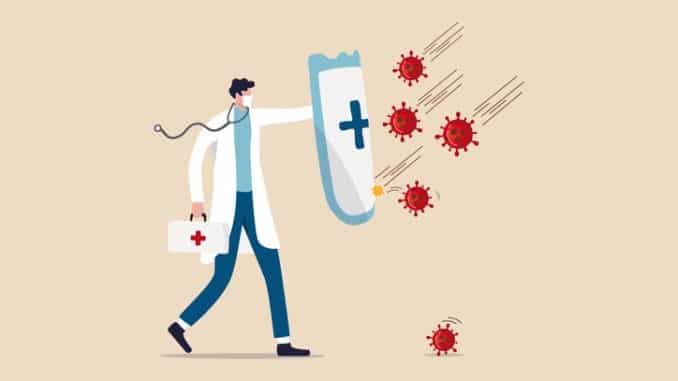
More emphasis on primary care in the management of COVID-19 would improve outcomes for patients, argue Sophie Park and her colleagues
CREDIT: This is an edited version of an article that originally appeared on The BMJ
Health services across the world made rapid adjustments to the direct and indirect consequences of COVID-19, with varying success. The World Health Organization’s initial recommendations were based on system adaptations in China, focusing predominantly on secondary care and public health. Primary care received less policy attention both globally and in the UK.
Hospitals were major centres of transmission, with mortality at 40% among those receiving critical care, and many patients dying alone. With cases again increasing, there is an urgent need for strategies to support management of patients at home, reduce unnecessary admissions and optimise the use of health service resources.
Effect on UK primary care
Rapid changes in response to COVID-19 had profound effects on the delivery of primary care in the UK; for example, telephone, email and video consultations increased substantially. This allowed continuity of care, but meant that only selected patients received face-to-face consultations, such as those for whom physical examination was expected to significantly change management, and where the potential benefit outweighed the risks.
Patients with symptoms of COVID-19 were redirected to NHS 111 call centres to access testing. Although use of NHS 111 shifted the immediate burden of diagnosing and managing patients with COVID-19, it also undermined the ability of general practice to provide continuing and comprehensive care. Call centre staff do not have full access to patient records and so have limited information about the patients’ coexisting conditions and home situation. As 111 staff focused on acute COVID-19 symptoms, patients were often denied the opportunity to discuss long term care options for COVID-19, and other serious conditions, with a familiar healthcare professional.
Many patients in care homes are looked after by GPs. The shift to remote working resulted in inconsistent support for care homes, which was compounded by inadequate personal protective equipment and disorganised testing of staff and residents. The government support package was published late (15 May 2020), resulting in missed opportunities to prevent infection in residents and staff.
Current challenges
These initial changes have now become normalised. Although patients with severe symptoms were still admitted to hospitals, during the summer, about 30% of registered COVID-19 deaths occurred outside hospitals. For example, data from the Office for National Statistics (ONS) for the week ending 3 July 2020 shows that deaths in private homes were above the five-year average. Primary care is therefore faced with new challenges.
COVID-19 is moving into a long-term pattern, with repeated infection peaks and local outbreaks. People who survive the initial COVID-19 infection can experience severe mental and physical sequelae. Lockdown, and the resulting economic recession, may also exacerbate chronic mental, social and physical health problems. General practices must, therefore, plan, risk assess and provide care for both COVID-19 and the accumulating backlogs of other acute and chronic disease. This requires monitoring systems for COVID-19 and non-COVID morbidity with surge capacity for the ‘flu season and local outbreaks.
In addition, ensuring good palliative care is important for patients who will not benefit from intense medical intervention, and requires an appreciation of the process and rituals of dying, alongside practical guidance such as discussion of power of attorney. It benefits from GPs’ knowledge of patients and carers, regular contact, planning and co-ordination between patients, primary and palliative care services.
The gap between public health and primary care has also been exposed by COVID-19. Public health is integrated with local government and is largely disconnected from primary care, resulting, for example, in poor health protection in many residential care homes. The challenge is compounded by the initial marginalisation of public health in testing and contact tracing, which has been outsourced to private companies rather than strengthening existing services; this has undermined a coherent response. The formation of the National Institute for Health Protection will bring together Public Health England, the NHS test and trace service and the Joint Biosecurity Centre, but the links with primary care – and the plans for the broader preventive activities of Public Health England – are unclear.
Primary care is, therefore, facing interlinked problems; inadequate notification of COVID-19 test results, delayed investigation or admission of sick patients, inadequate discharge planning and communication, inappropriate admission of those who are unlikely to benefit and the need for enhanced, complex care of chronically ill people in community settings. The extent to which these challenges will persist after the initial wave of infections remains to be seen.
Primary care is inadequately represented at the strategic level. For example, there are no practising GPs on any Scientific Advisory Group for Emergencies (SAGE) committees. Instead, communication has been predominantly downwards from (mostly national rather than local) public health and specialist care. Another example is the initial compilation of lists of ‘clinically extremely vulnerable’ patients for shielding, which was largely derived from hospital records as these were wrongly assumed to be the most accurate source of clinical information. Lists were then circulated to GPs for checking, with little notice, over the Easter weekend. Our experience suggests that many patients were, initially, incorrectly classified.
Potential responses
UK general practice is embedding new models of care to help patients with an increasingly complex burden of ill health, alongside rapid changes in service delivery. The risk is that these ways of working become, by default, accepted and fixed, without any strategic thought.
GPs must be part of a coherent strategy that prepares the NHS for COVID-19 outbreaks, concomitant epidemics, and the delayed management of other conditions. Prompt communication between primary care, public health and secondary care is essential. Some public health expertise has been integrated into clinical commissioning groups, and their primary care networks, but this should be extended to testing and contact tracing. Resilient supply chains for essential equipment – including personal protection, technologies for remote monitoring and opportunities for bedside or same day testing – are imperative.
Robust strategies are needed to optimise the management of patients with COVID-19 at home, including end-of-life support for those who are not candidates for intensive care. Joint plans can be developed for more humane care with family involvement.
Hospital at-home services, and community nursing, should be scaled up for both COVID-19 and non-COVID conditions to reduce pressure on hospital beds. In care homes, staff have already adapted processes to improve advanced care planning while minimising unnecessary physical contact. This includes video ward rounds, electronic stethoscopes, pulse oximeters and allowing staff to confirm death.
In order to deal with rising demand, there will be a transition from nearly 100% virtual consultations to an appropriate mix of virtual and face-to-face consultations. While telemedicine has proved invaluable, it has limitations; touch is an important aspect of patient assessment and care, and patient suitability for remote consulting varies. Care should also be taken to ensure that efforts to promote the use of online tools to access key information do not undermine equity of access and continuity. People recovering from COVID-19 also need access to rehabilitation, monitoring of respiratory and other affected systems, and mental health support.
Primary care will also have to deliver massive expansion of the ‘flu prevention programme, as well as future COVID-19 vaccinations. The training of new healthcare professionals must be adapted to this altered service environment. This requires patient involvement and systematic, long-term evaluation of impact.
Joined-up care
Individual and organisational efforts to respond to COVID-19 have been rapid and extraordinary; they have, however, lacked a connected, coherent strategy. Primary care offers opportunities for early intervention to reduce the risk of adverse outcomes, continuity of care and enhanced whole system resilience in response to a range of health challenges arising from the evolving COVID-19 pandemic. Effective technical and human responses require direct involvement of primary care in planning and implementing service changes and appropriate training, underpinned by robust research evidence.


Be the first to comment